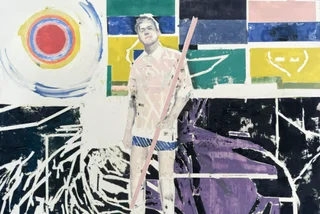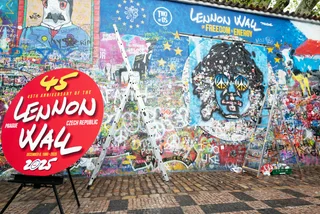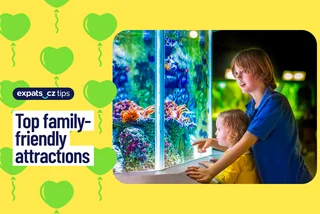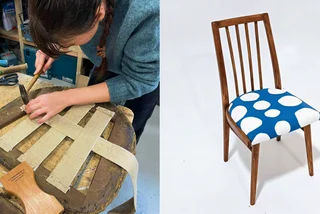National Gallery Prague (NGP) celebrates 227 years with free admission to permanent exhibitions on Feb. 4–5. While NGP's modern art venue Veletržní palác in Prague 7 is its most well-known venue, the gallery also oversees three palaces near Prague Castle and several other locations across the city.
The permanent exhibitions include 20th-century art at Veletržní palác, medieval art in the Convent of St. Agnes, and old masters in the Schwartzenberg and Sternberg palaces. Temporary exhibits in these and other venues are not included. A side program has guided tours and children’s workshops in Czech. No reservations are required.
Leaders of patriotic Czech nobility and educated city leaders met on Feb. 5, 1796, to establish the Society of Patriotic Friends of Art (Společnost vlasteneckých přátel umění), which laid the foundations of what became the NGP and the Academy of Arts.

Count František Josef of Šternberk and Manderscheid and artist Jan Quirin Jahn were the driving original members. Other noble names that people would recognize today include Kolovrat, Lobkowicz, Černín, Lobkowicz, Nostic-Rieneck, and Clam-Gallas. Successful doctors and other wealthy townspeople interested in art were also involved. The first meeting was likely at Sternberg Palace near Prague Castle, which is now a galley venue.
Under Emperor Josef II, art that had accumulated in Prague Castle was increasingly being moved to Vienna. Due to Josef II’s religious reforms, centuries of art collected by convents and monasteries were also being disbursed.
Collections on the move
The Society of Patriotic Friends of Art wanted to stop the loss of Prague’s heritage and educate the public by creating a permanent picture gallery. The first try was at Černínský Palace, now the seat of the Ministry of Foreign Affairs. Admission was free. The main collection moved many times throughout the 19th century before settling into the Rudolfinum in 1895, where it stayed until 1931.
French-Speaking Senior Recruitment Consultant


When Czechoslovakia was established in 1918, the collection managed by the Society of Patriotic Friends of Art became the basis of the new national gallery. Throughout the 1920 and 1930s, modern art from Czech and international artists began to be added.
The Municipal Library at Mariánské náměstí housed the collection after 1931 and the Society of Patriotic Friends of Art lasted as an organization until 1950 when the communist authorities shut it down.

Plans to build a large permanent venue to house the entire collection were put forward several times from the 1920s onward, and in the 1960s there was even a push to create a new building in Letná where the statue of Stalin used to stand. None of these plans bore fruit, and the collections remain split up.
The national gallery slowly took over its current venues starting with Sternberg Palace in 1947. Some of them, such as the St. Agnes Cloister, were in poor condition and needed extensive renovation.
A modern home for modern art
The National Gallery acquired Veletržní palác, which was in danger of demolition following a large fire two years earlier, in 1976. Renovations were slow, and it wasn’t ready to open to the public until Dec. 13, 1995, as the national gallery's main venue.

Veletržní palác wasn’t built as an art venue. When it opened in the late 1920s it hosted trade fairs – hence the English name Trade Fair Palace. The modern functionalist-style building was designed by Josef Fuchs and Oldřich Tyl, who designed several other modern landmarks around Prague.
During the communist era, it was home to companies involved in foreign trade, and the adjacent Park Hotel (now Mama Shelter) was one of the few places where visiting foreign entrepreneurs could stay.
New identity for the 21st century
The most recent development for the National Gallery is a new visual identity launched in 2018 that was meant to make the gallery seem more inviting. The previously used lion with the lower-case letters "NG" was seen as a bit dated in style, and reminiscent of the previous era.
The new logo consists of the stacked block letters NGP with an open space that can be used for additional text. The logo by designer Aleš Najbrt beat nine other entries in a competition.












 Reading time: 3 minutes
Reading time: 3 minutes 


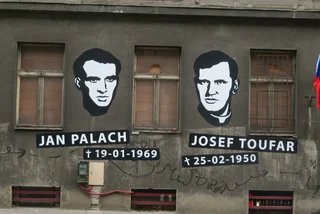
 English
English
 German
German
 Czech
Czech
